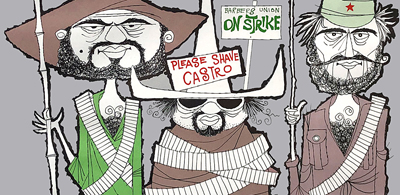The Cold War Dick Van Dyke Show
One night as an 11-year-old in 1965, I watched an episode of The Dick Van Dyke Show in the family living room—the CBS sitcom was produced in glorious black and white and ran from ‘61 to ‘66. I was an avid young fan even though I didn’t always understand the story lines, but it was the early ‘60s when “family entertainment” actually spoke to young and old alike.
Already making pencil drawings and dabbling with oil paint, I appreciated the premise of the show. Rob Petrie (Dick Van Dyke) was the head writer for a comedy/variety TV show along with fellow writers Buddy Sorrell (Morey Amsterdam) and Sally Rogers (Rose Marie). I’ve always been interested in creative types, even as a child.
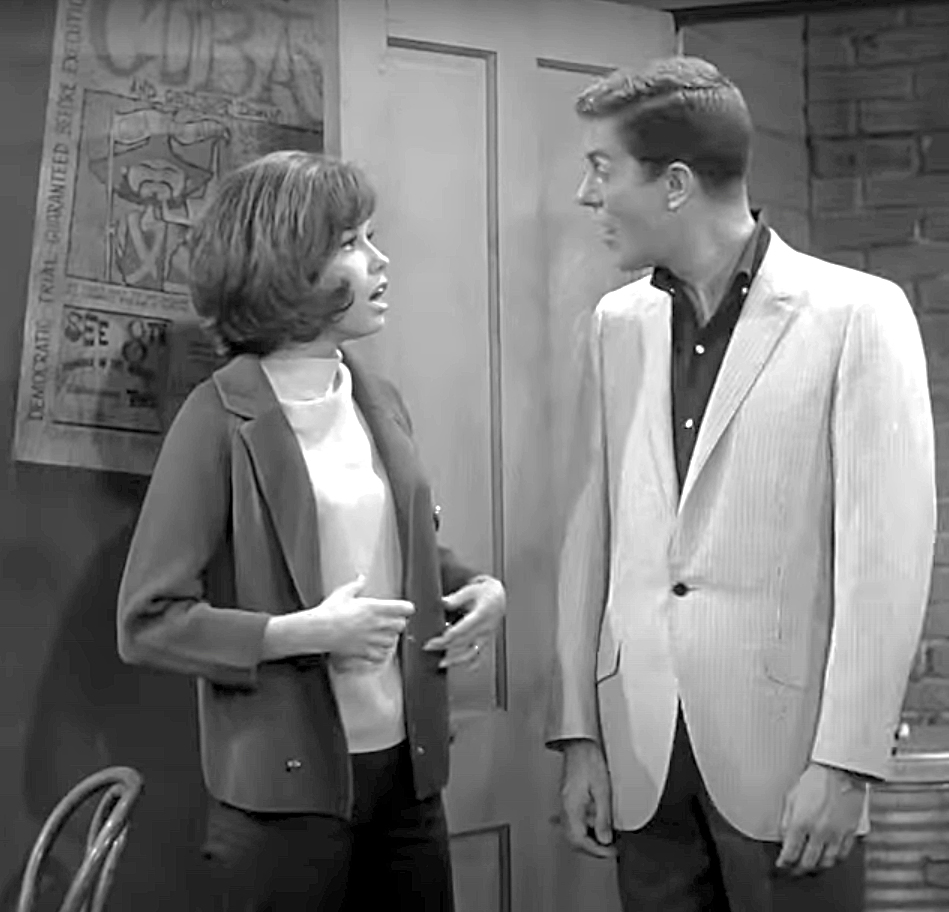
I “came of age” watching the show. Petrie’s young wife Laura (Mary Tyler Moore) was a dancer before they married. Their young son Ritchie provided youngsters like me entry into the show’s adult world. Despite the fiascos of the Petrie family, Rob and Laura were talented and dare I say, glamorous. It seemed to me the two were a reflection of President John F. Kennedy and his lovely wife Jackie.
Speaking of coming of age. On Nov. 22, 1963, Kennedy was assassinated in Texas. That same day I watched Walter Cronkite on CBS tell the nation of the president’s death. I saw the live televised reports of accused killer Lee Harvey Oswald being shot and killed by Jack Ruby on Nov. 24. The Dick Van Dyke Show filmed the episode Happy Birthday and Too Many More, on Nov. 26, 1963. As the nation mourned, the show attempted to lift our spirits.
The Dick Van Dyke Show continued to supply us with gleefulness, but as some scruffy folk-singer once crooned in 1964, The Times They Are A-Changin. When the sitcom ended on June 1, 1966, Americans were just waking-up to a full blown ground war in a far away place called Vietnam.
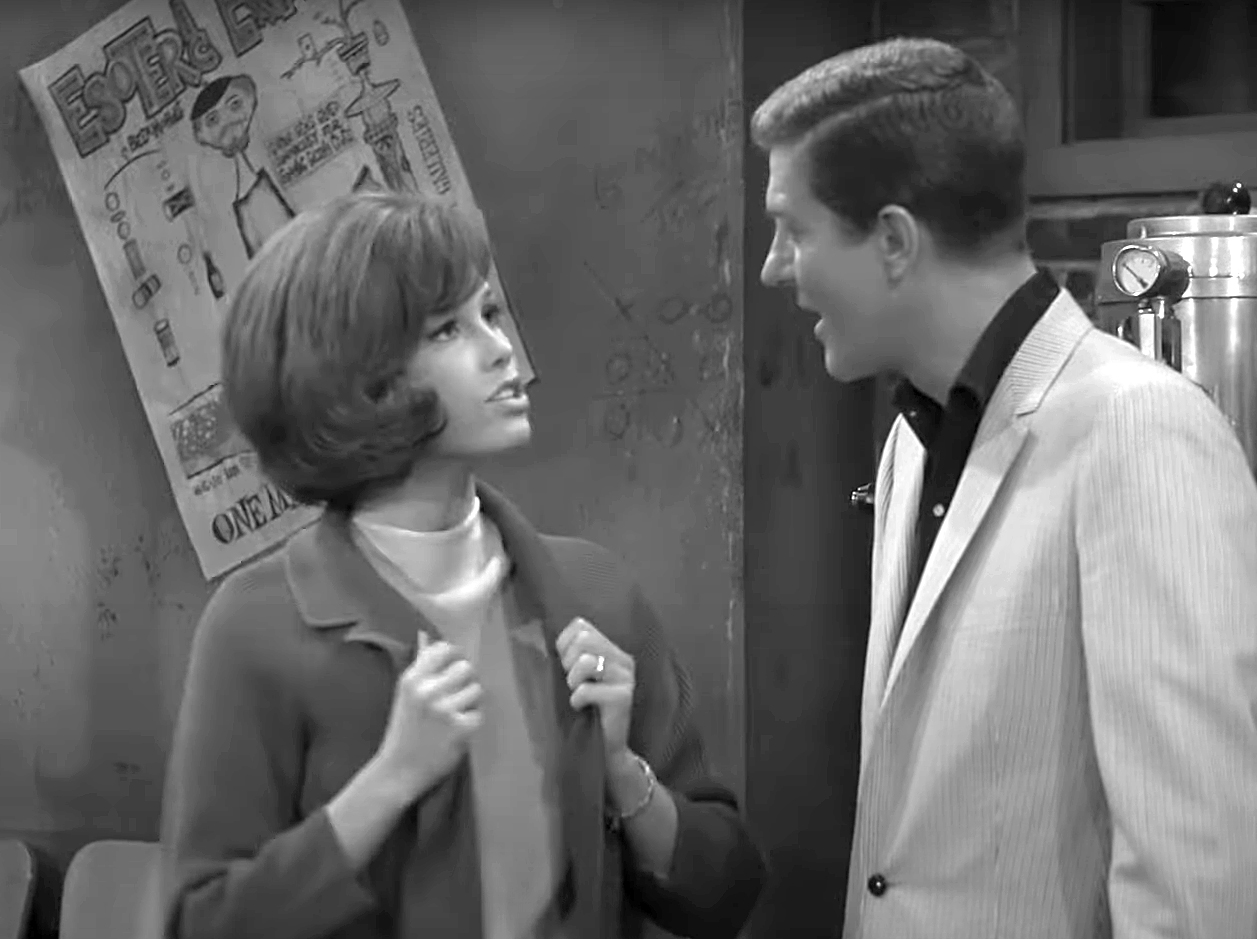
That notwithstanding, this essay is not about President Kennedy, the Vietnam war, or even The Dick Van Dyke Show in and of itself. It’s about Cold War era American culture, with a surprising tie-in to The Walt Disney Company of the ‘60s—long before it became the Rat Empire so many Americans loath today.
The episode of The Dick Van Dyke Show I saw as a child and mentioned in the opening of this essay, aired on Jan. 27, 1965; it was titled Stacey Petrie: Part II. Six decades later I found an online copy and viewed it once again, this time in the 21st century. The plot was simple enough. In a nutshell Rob’s brother Stacey (played by Dick Van Dyke’s real-life brother Jerry), bought a run-down bohemian coffeeshop in New York City, and Rob and Laura were left to clean-up and renovate the café.
During my recent view of the Stacey Petrie TV sketch, I became fixated on the art used to decorate the coffeehouse interior. I had never before seen those artworks, yet they were familiar aesthetically. In my mind they were associated with the Beat Generation, the nonconformists of the late 1950s and early 1960s that were given to jazz, poetry, and anti-materialist philosophy.
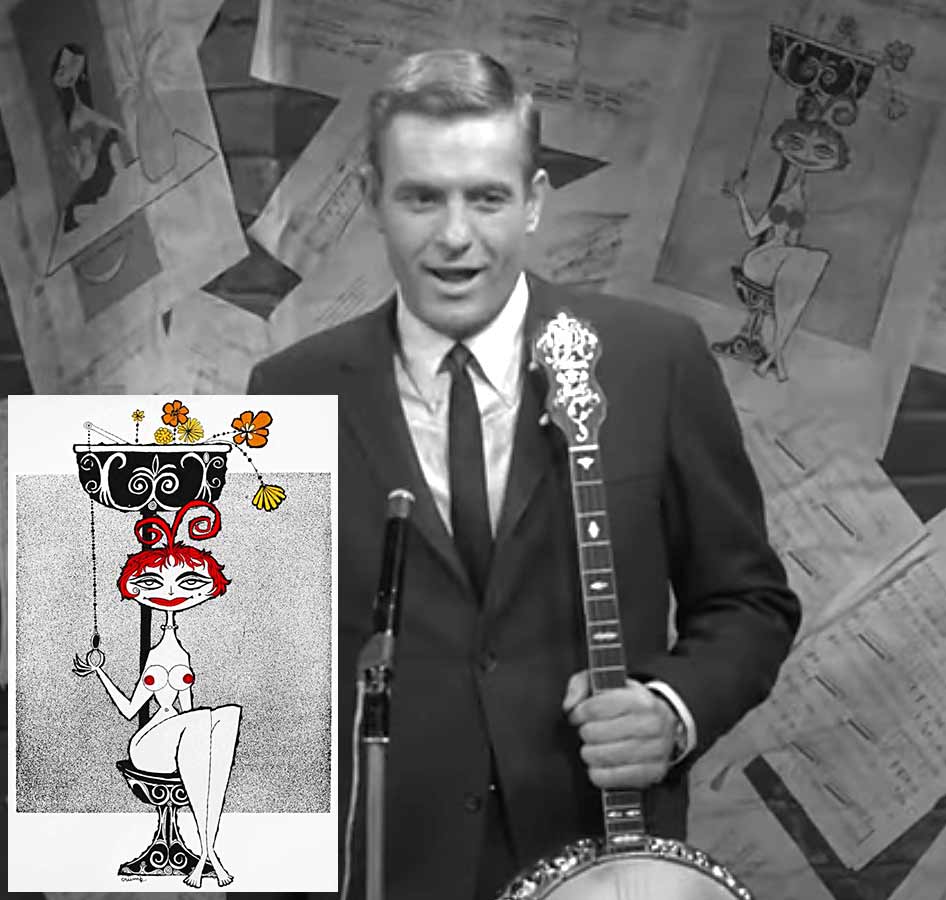
Every time one of those posters appeared on the TV screen, I would hit pause and squint trying to identify something revealing about the origins of the artworks. I finally went to my computer, and after protracted research discovered answers to the enigmatic puzzle.
The posters were published in 1960 and 1961 by the Esoteric Poster Company. The business was founded by Howard Morseburg, a California art dealer who represented West Coast American artists.
By chance Morseburg met an artist in the San Fernando Valley community of Los Angeles (where I was raised). The youthful fellow was a 22-year-old that in 1952 got a job working at Walt Disney Studios in Burbank, CA as an “In-Betweener.” He made $35 dollars a week. His name was Roland Fargo Crump, or Rolly for short.
Experienced animators create key animation drawings, while unseasoned animators finish a scene by drawing “in-between” the completed key sketches. Crump worked as an “In-Betweener” prior to becoming an assistant animator on Peter Pan, Lady and the Tramp, Sleeping Beauty, and One Hundred and One Dalmatians.
As Beatnik jazz clubs, bookstores, and coffeehouses proliferated in the ‘60s, Howard Morseburg was introduced to the Beat Generation—and he thought them ripe for satire. He recognized Crump’s talent and contracted him to produce a line of posters satirizing the Beats. But Morseburg also had his eye on world politics… it was the height of the Cold War.
Having encountered Nazis and Soviets in Europe during WWII, Morseburg grew opposed to totalitarianism, and he was concerned about human rights behind the “Iron Curtain.” So he also had Crump producing humorously thought provoking anti-communist posters.
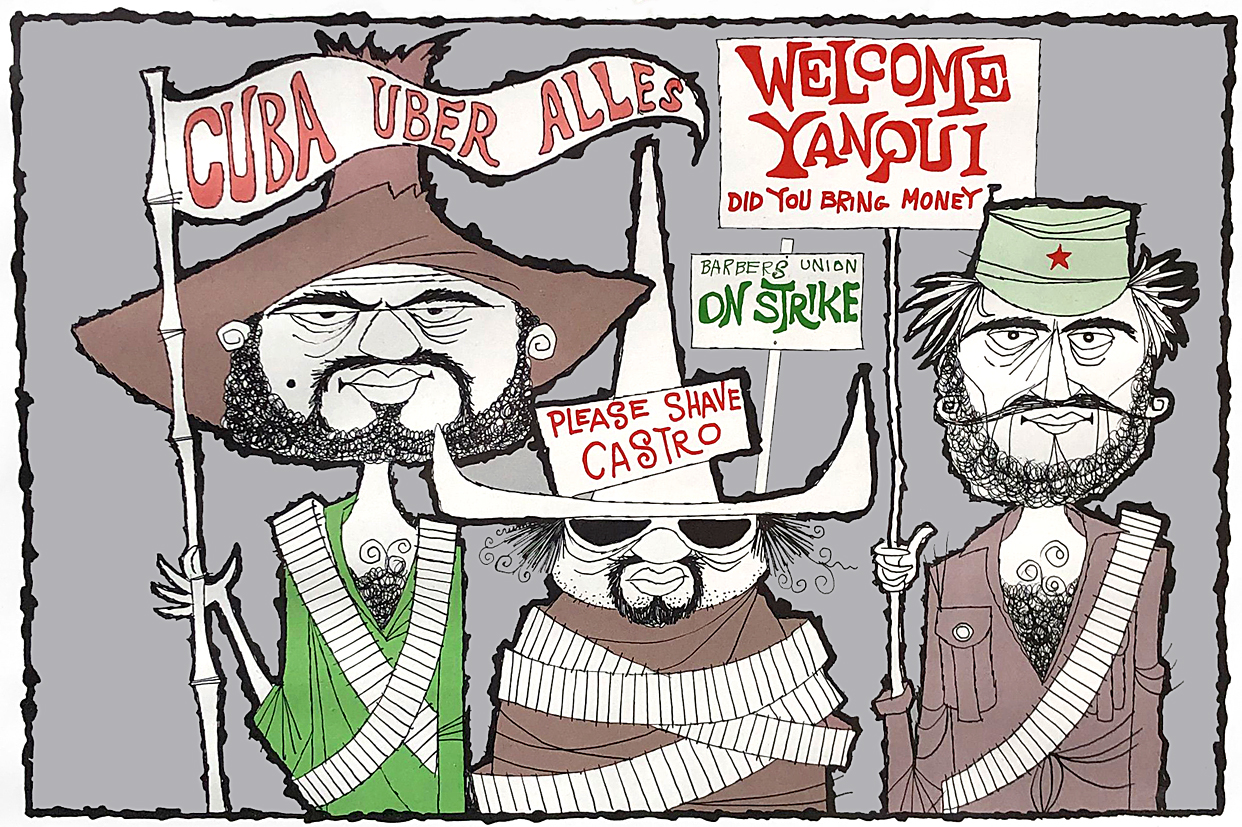
In 1960 Rolly Crump designed and illustrated a poster for Morseburg’s Esoteric Posters titled Fly To Cuba. This was one of the posters I spotted in the Stacey Petrie episode of The Dick Van Dyke Show.
On Jan. 1, 1959 Fidel Castro led a violent revolution that overthrew the US backed government of Cuba. On Oct. 3, 1965 the Fidelistas declared the Communist Party of Cuba as the exclusive director of the one-party state that still rules the island nation today.
Crump’s satirical poster excoriated the Fidelistas; it was exactly the kind of rude critique that would have placed a Cuban dissident in prison… or in front of a firing squad. In fact, the text on Crump’s poster read; “Fly to Cuba—And Get Shot Down (live dangerously),” as well as “Democratic Trial Guaranteed Before Execution.”
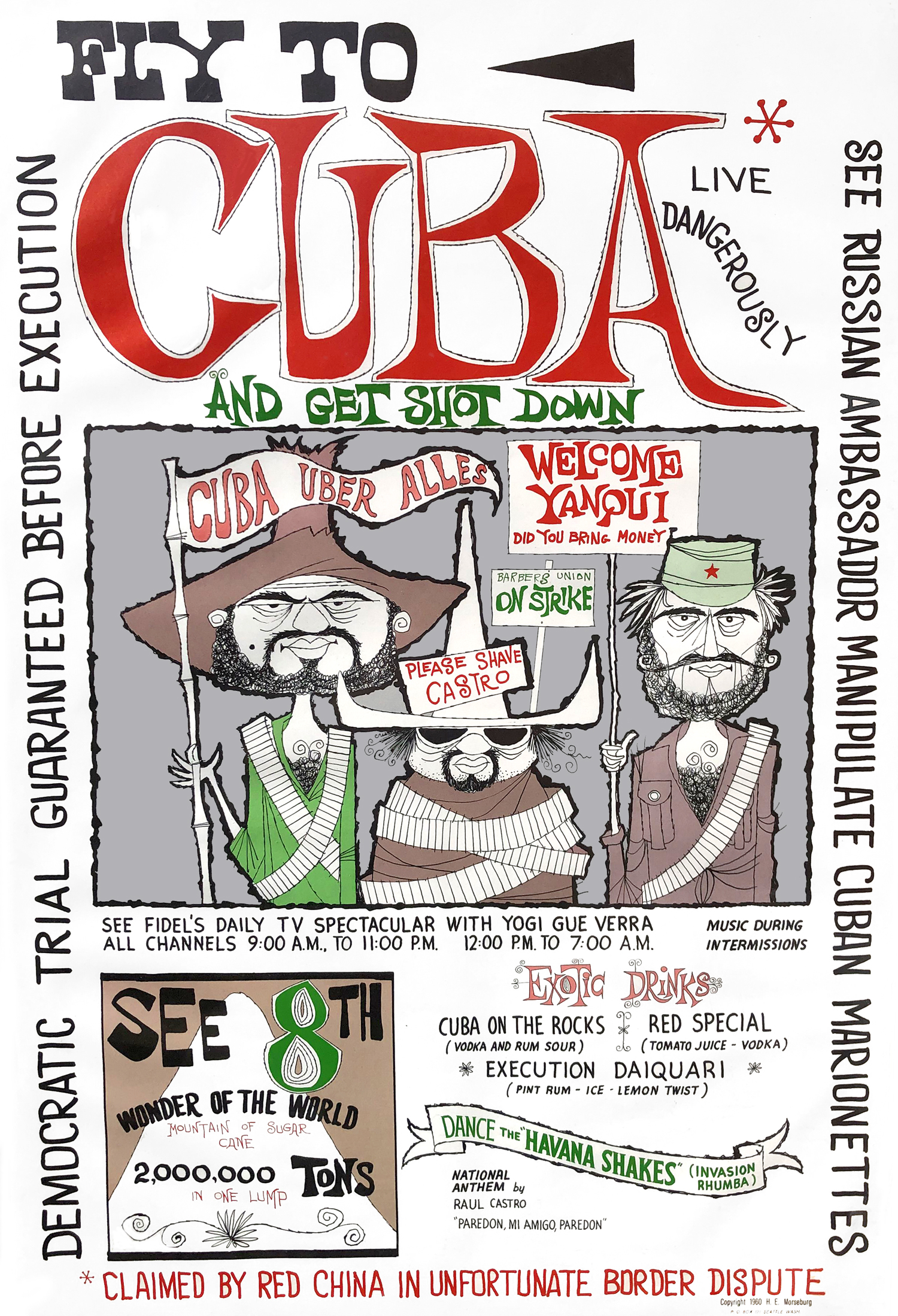
There was an Exotic Drinks menu included on the poster, one description read; Execution Daiquiri (Pint Rum-Ice-Lemon Twist). In small print there was “National Anthem by Raul Castro—‘Paredon, Mi Amigo, Paredon.” In Spanish paredón means wall, so essentially the fake national anthem was titled To the wall, friend, to the wall. Mind you, Raul Castro (Fidel’s brother), led Cuba from 2008 to 2021.
Crump took a jab at Che Guevara, the Argentinian Marxist who in 1959 was 2nd in command to Fidel. When their revolution triumphed on Jan. 1, 1959, Fidel put Che in charge of the firing squads that meted out “revolutionary justice” to members of the vanquished regime.
At a Jan. 22, 1959 mass rally outside the presidential palace in Havana, Fidel asked the crowd of one million if they supported mass executions. The crowd roared back “¡Al Paredón!” (To the Wall!). On his Fly To Cuba poster Crump included the line: “See Fidel’s Daily TV Spectacular with Yogi Gue Verra”—the name being a pseudonym for Che Guevara.
What’s fascinating is that Dick Van Dyke and the show’s producer Carl Reiner (1922-2020), who also acted in the show, were fervent liberals, yet Crump’s anti-communist poster appeared on the show.
I don’t know what the studio bosses were thinking, but with today’s left-wing socialists of The Squad firmly entrenched in the Democrat Party, it’s hard to imagine anti-socialist muckraking like this being initiated by present day liberal networks. This seems an excellent illustration of the leftward shift that’s occurred in liberalism.
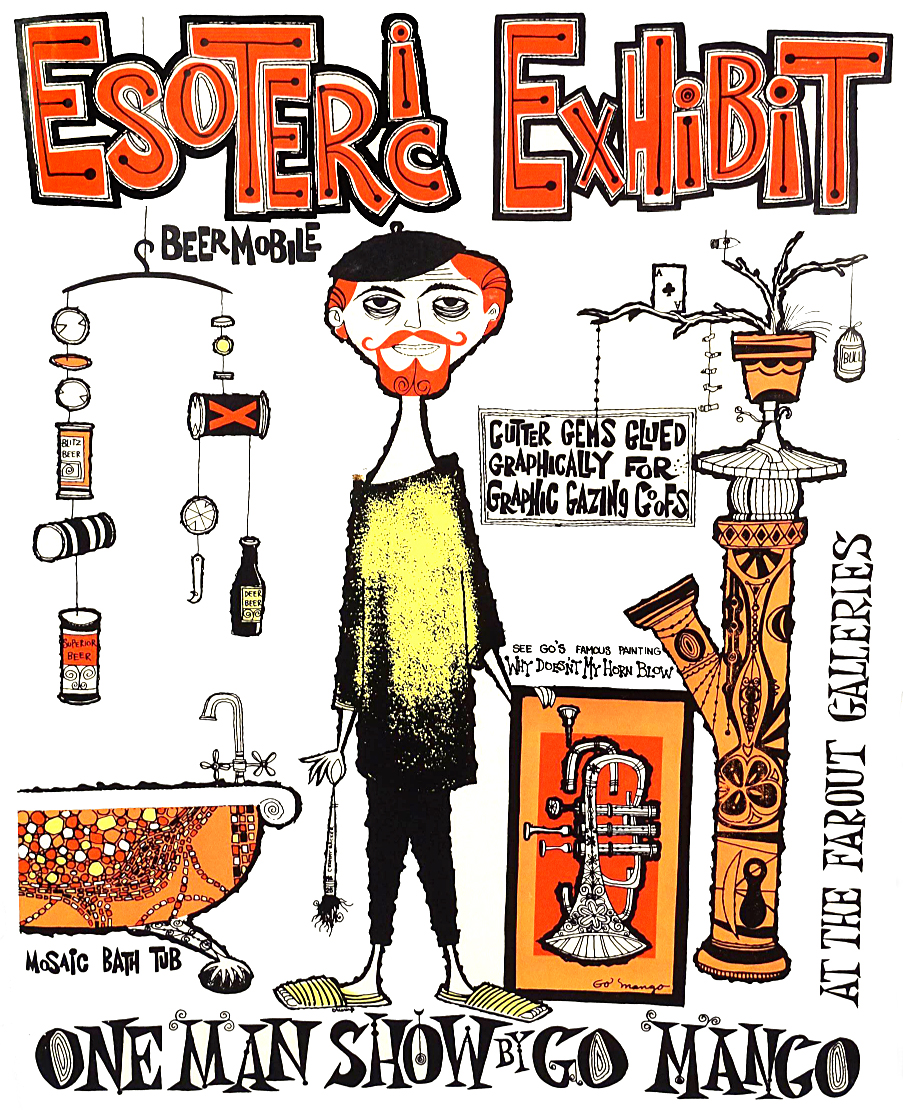
Crump was something of a Beatnik himself, as evidenced in the early 1950s photo shown below. In 1960 he designed and illustrated a print for Howard Morseburg titled Esoteric Exhibit. This artwork also appeared in the Stacey Petrie episode of The Dick Van Dyke Show.
With Esoteric Exhibit, Crump took a shot at the Beats, aiming at their minimalist anarcho-primitivism. He pictured a fictional bearded, beret-wearing artist named Go Mango, holding a frazzled paint brush and a framed painting of a broken trumpet. Above the canvas were the words; “See Go’s famous painting, ‘Why Doesn’t My Horn Blow?’”

Was Crump being self-deprecating, upbraiding himself for being fixated on kinetic mobile art? Was Go Mango his stand in? Esoteric Exhibit included two mobiles made from cans and bits of detritus. The irony is that in real life a fellow artist at Disney, a background painter named Frank Armitage, once made a mobile from a coat hanger, string, and an eraser. Crump had never seen a mobile before and was amazed.
Armitage told Crump to research Alexander Calder, so he went to the Disney Studios library and looked him up, along with kinetic sculpture, and mobiles… that inquiry changed Crump’s life.
Crump grew obsessed with creating mobiles. A studio animator suggested he mount an exhibit of his mobiles in the Disney library. He did, and Walt Disney not only noticed the works, in 1959 he moved Crump from the animation department to Walt Disney Imagineering (WDI), where research and development melded imagination to engineering. Crump become what Walt called an “Imagineer.”
The Imagineers designed, created, and constructed all attractions seen in Disney theme parks. In time Rolly Crump became world famous, not so much for his drawings, but for his whimsical architectural designs.
Crump once commented on his works being on television;
“I learned that some of my posters were featured on The Dick Van Dyke Show in the 1960s. There were a few scenes in a coffee shop and some of my posters are on the wall behind them, and I got a kick out of that.”
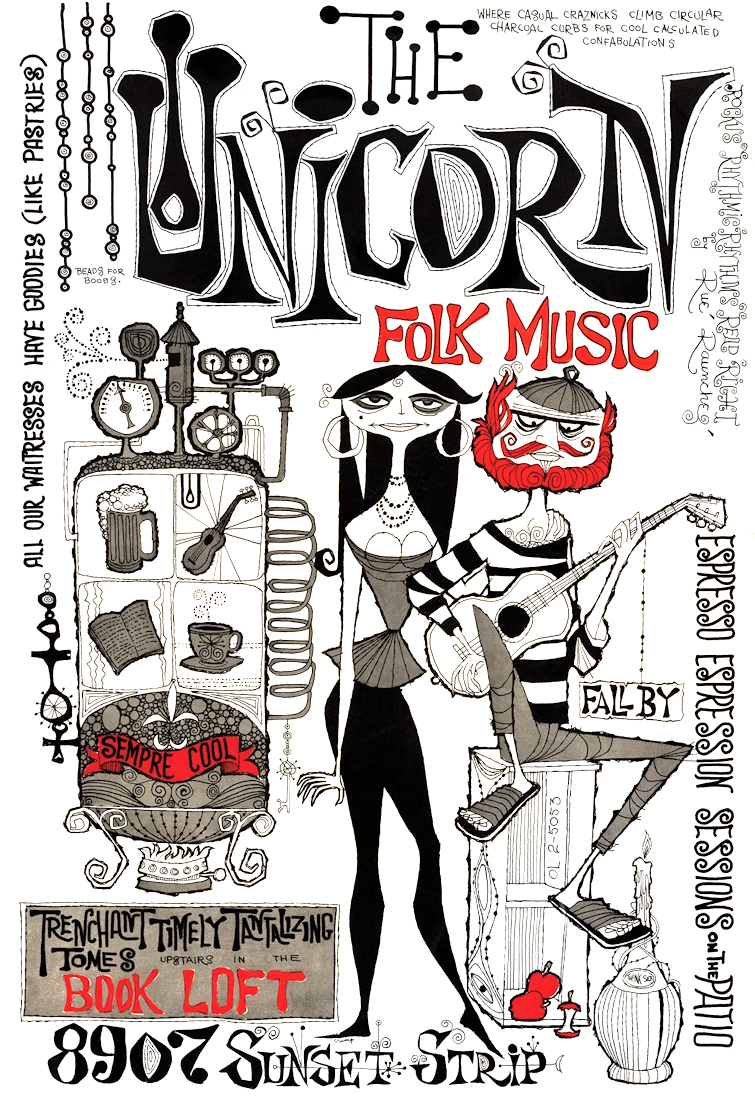
In 1960 Crump created a poster for The Unicorn in Los Angeles, California. It was the very first coffee house in all of LA, and it was located on Sunset Blvd. in West Hollywood. Moreover, it was a folk music venue and became a beacon for every expresso loving hipster in Southern California. As Crump wrote on the poster, the café was “Where Casual Craznicks Climb Circular Charcoal Curbs For Cool Calculated Confabulations.”
The Unicorn also had an upstairs book loft for poets and intellectual types. The place was opened by Theodore Bikel and Herbie Cohen in 1955, and daddy-o if you don’t know who they were, you’re slated for crashville, dig?
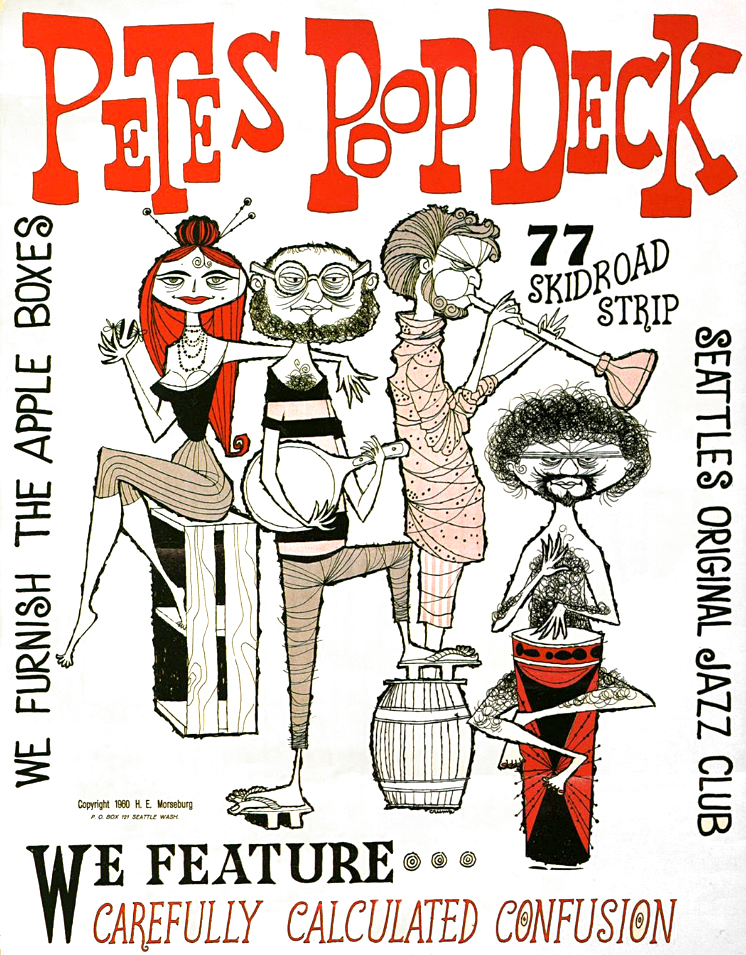
Also in 1960 Rolly Crump created a poster titled Petes Poop Deck. It advertised the now legendary jazz club Pete’s Poop Deck, which was founded in 1957 and located in the Pioneer Square neighborhood of downtown Seattle, Washington. Jazz aficionados call the place one of the city’s first modern jazz clubs. By the look of Crump’s poster, it must have been a wild place, at least initially.
The artwork depicts beatnik musicians bringing to life the club’s byline of “Carefully Calculated Confusion.” The red-headed sex-bomb plays a finger symbol, while oddly enough three cool cats individually play a ping-pong paddle, a toilet plunger, and a conga drum.
Howard Morseburg personally sold Crump’s Beatnik and anti-communist posters to bookstores up and down the West Coast from Seattle to San Diego. They proved to be fairly popular, it’s amazing these broadsides from the Esoteric Poster Company predated the Psychedelic poster craze by several years—Morseburg would have his hand in that as well.
Jeffrey Morseburg inherited the Esoteric Poster Company collection from his father Howard Morseburg, and continued in his father’s footsteps as an art dealer, curator, lecturer, and gallerist. Jeffrey has long been associated with the California Art Club, the oldest arts organization in the state, and if I’m not mistaken he sat on its Advisory Board.
When writing his thoughtful rumination, The Story of the Esoteric Poster Company, Jeffrey Morseburg made some flabbergasting remarks about Mario Savio (1942-1996), a leader of the Berkeley Free Speech Movement in the early ‘60s. I was inspired by that movement as a teen, particularly by Savio’s unforgettable oration at Berkeley University of Dec. 2, 1964, known as Bodies Upon the Gears. In that speech Savio said:
“There is a time when the operation of the machine becomes so odious, makes you so sick at heart, that you can’t take part… you can’t even passively take part!
And you’ve got to put your bodies upon the gears, and upon the wheels, upon the levers, upon all the apparatus, and you’ve got to make it stop! And you’ve got to indicate to the people who run it, to the people who own it, that unless you’re free, the machine will be prevented from working at all!”
I still believe those are words to live by, they express an American ideal that applies internationally, an enduring verity embodied in the First Amendment to the US Constitution. Though perhaps Savio held a different perspective.
Jeffrey Morseburg accused Savio of censoring his father’s Esoteric Poster artworks “satirizing life in the Soviet Union and Castro’s adoption of Soviet methods in post-revolutionary Cuba.” As per Jeffrey’s memories:
“These satirical political posters sold well in college bookstores, until, ironically, those bearing the images of actual totalitarian leaders like Ho Chi Minh, Mao and Lenin replaced them! In Berkeley, Mario Savio and the perhaps no-so-well-named ‘Free Speech Movement’ demanded that the Berkeley Bookstore (still located across from Sproul Hall) stop selling the Esoteric line of posters.
The sixties were a time of excess and radicalism and no place embodied the sixties ethos more than Berkeley. However sadly, the Berkeley Bookstore complied with Savio’s censorship request and discontinued the sale of Esoteric’s Posters, much to the dismay of a faction of students.”
The only source for Jeffrey Morseburg’s allegation that Mario Savio successfully waged a censorship campaign against the Esoteric Poster Company, came from Jeffrey’s online essay, The Story of the Esoteric Poster Company, published in 2003. I haven’t found any evidence that the assertion is true, or untrue. Perhaps in time, other investigators will dig up some evidence.
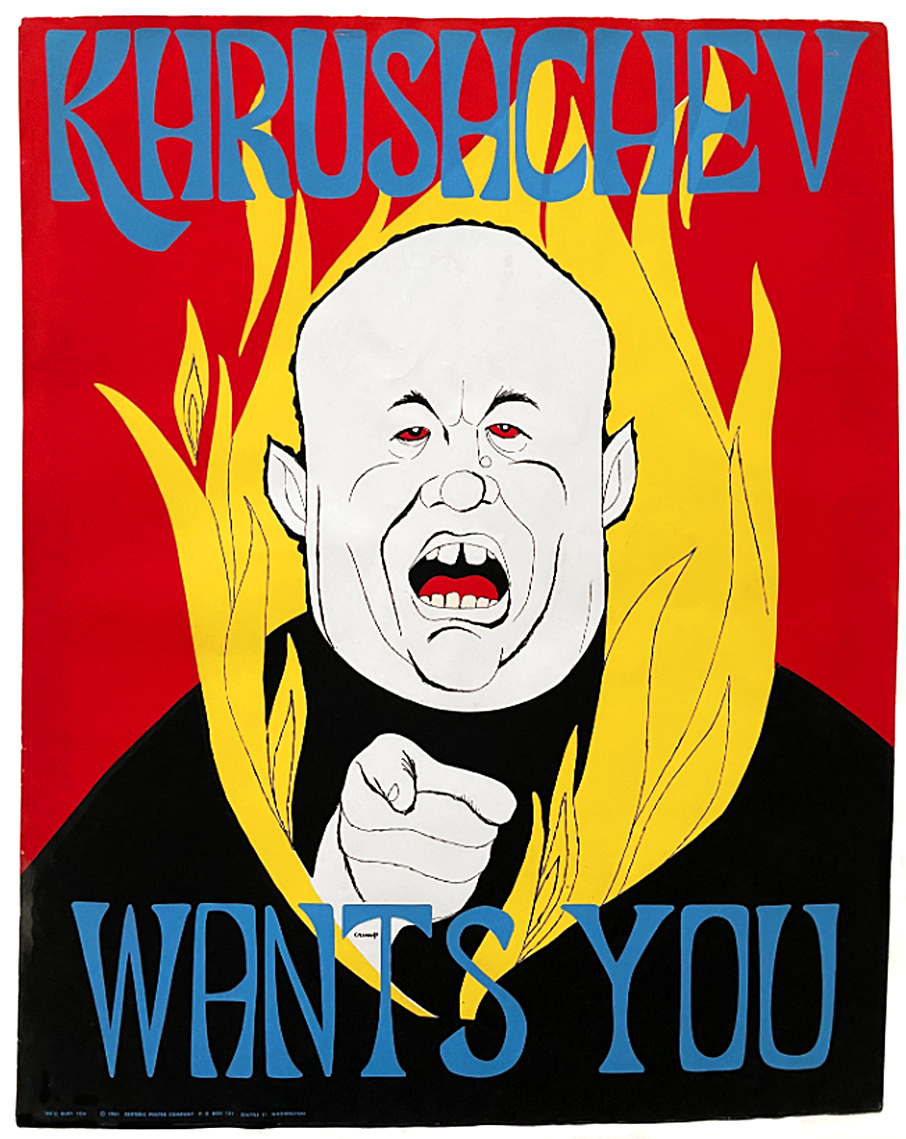
In 1961 Rolly Crump created his We Will Bury You (Khrushchev Wants You) poster for Esoteric Posters. Nikita Khrushchev was the First Secretary of the Communist Party of the Soviet Union from 1953 to 1964. In 1956 Khrushchev infamously said of the capitalist West, “We will bury you.” Numerous Americans took those words as threatening atomic warfare; in his poster Crump gave Khrushchev a necklace of atomic fire.
On Sept 15, 1959 Khrushchev visited the US after an invitation from the US government. He was scheduled to visit Disneyland in Los Angeles on Sept. 19, 1959, but the visitation was cancelled because US officials were worried they couldn’t handle a hostile crowd opposed to the Soviet leader. Khrushchev was infuriated, but I can imagine Crump being in that crowd.
In 1962 Khrushchev sought to “defend” Cuba when he sent Soviet medium-range nuclear missiles to the Castro regime. Parked 90 miles from the US coast, the missiles initiated the Cuban Missile Crisis. Americans went nuts.
I distinctly remember my parents, like many other Americans, readying a “fallout shelter” supplied with food and water in the event of atomic war. Castro urged Khrushchev to launch a nuclear attack on the US if Kennedy invaded Cuba. The crisis was averted when Khrushchev withdrew the missiles.
Inevitably hard-line Soviet elites decided Khrushchev wasn’t Red enough. On Oct. 14, 1964 they forced his retirement. He was given a dacha in the countryside and made a non-person. Leonid Brezhnev became General Secretary of the Communist Party. During his 18-year rule the Soviet Union invaded Czechoslovakia in 1968 to stop the Prague Spring democratic reforms, and of course the Soviets invaded Afghanistan in 1979.
There’s no doubt Khrushchev believed communism was a superior system that would outproduce and ultimately “bury” the free enterprise system of the West, but it was Soviet communism that totally and utterly collapsed on Dec. 26, 1991.

In 1961 Crump created his poster; Visit Siberia (Make Your Next Trip Abroad Your Last). The work criticized the Soviet Union’s forced labor Gulag camps that existed in Siberia. Between 1923 and 1962 some 18 million Russians were interned in them. Historians estimate between 1.6 to 1.7 million people died in the Gulags.
Crump’s poster featured four male prisoners behind barbed wire. The poster is arranged like a travel poster meant to entice with an exotic destination, food, and activities—the verbiage on the artwork screams; “Closed Box Cars Leaving Moscow Daily,” “16 Hour Daily Tours Of Salt Mines,” and “Quiet… Except For Early Morning Firing Squads.” My favorite is the menu; “Enchanting Potato Peel Soup. Buggy Black Bread Baked by Bourgeoise Bankers. Hot Vinegar.”
The artist named Roland Fargo Crump passed away at the age of 93 on March 12, 2023. He wasn’t the greatest artist in the world, but he was more inspirational, authentic, and conscientious than the majority of no talents and plagiarists comprising today’s postmodern art world. He genuinely sought to uplift everyday people with his artworks. No doubt he succeeded.
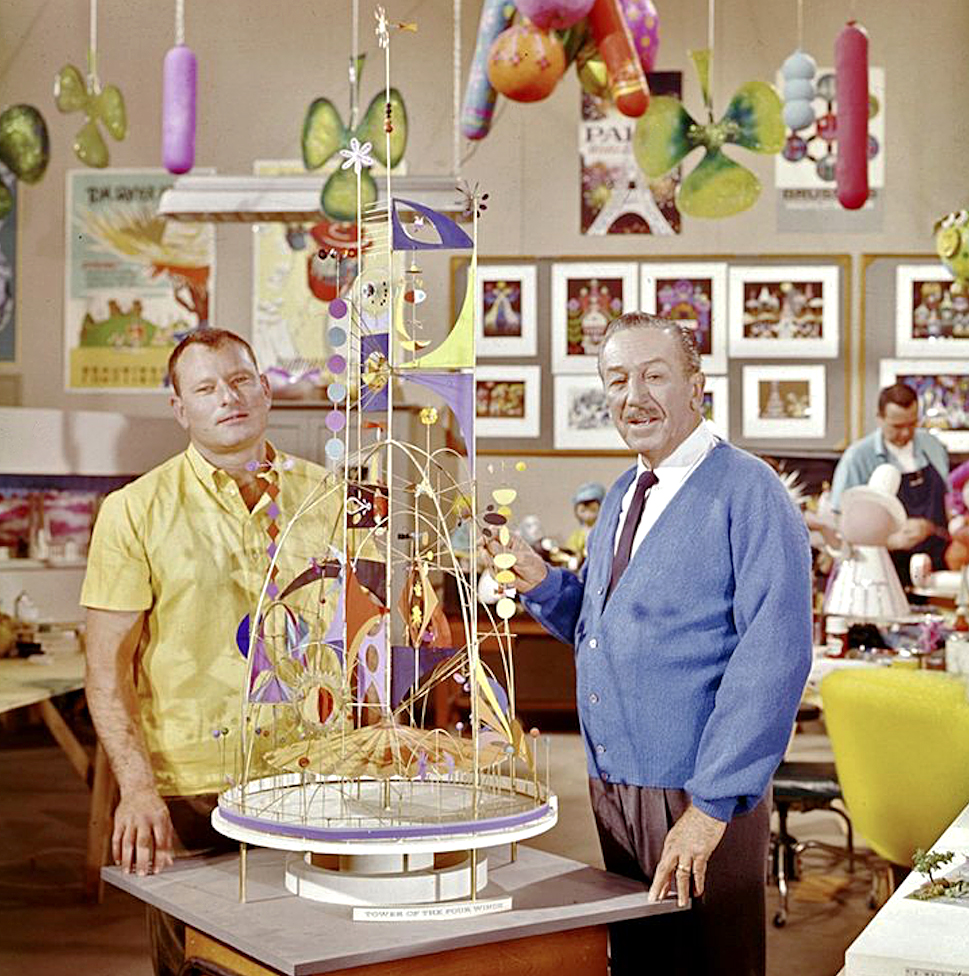
I knew of Crump because of his legendary works as an Imagineer. He designed the Enchanted Tiki Room, The Haunted Mansion, and a myriad of other Disney attractions. He worked on designs for the Magic Kingdom at Walt Disney World Resort in Florida, contributed to Disney’s EPCOT Center theme park, and labored on the Adventureland Bazaar in Disneyland Paris.
It’s not within the scope of this essay to touch upon all the wonders Crump left us—read his 2012 autobiographical book It’s Kind of a Cute Story for those histories. And of course, there’s a treasure trove of online info to be found on the man.
I only discovered Crump’s polemical posters because of an old episode from The Dick Van Dyke Show. It’s not surprising there’s a scarcity of contextual information regarding Crump’s Beatnik and anticommunist posters, so I sought to shed some light on the matter.
I guess old TV re-runs are good for something after all.


